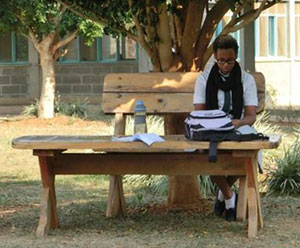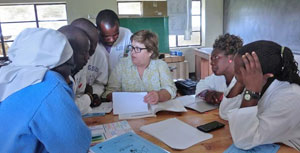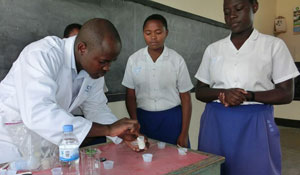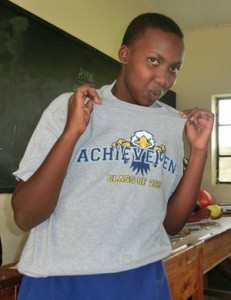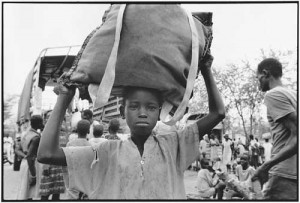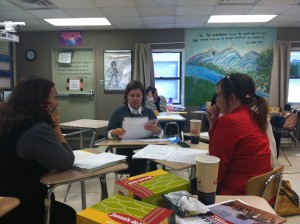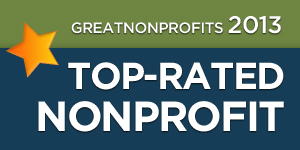Patricia Shafer, August 18, 2017
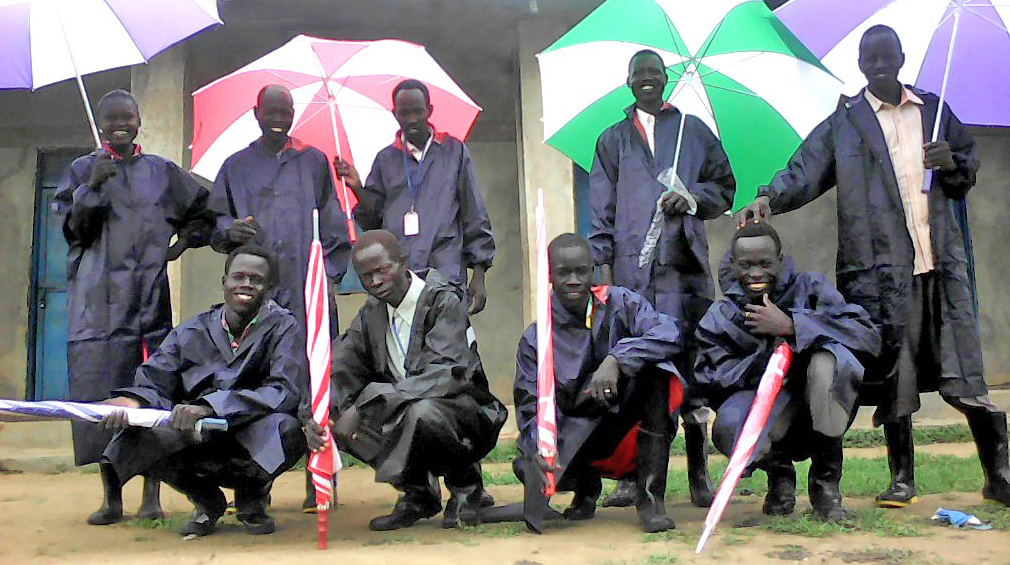 When people first hear about our Raising South Sudan education project they often say, “Do you build schools?” Answer: “Yes.”
When people first hear about our Raising South Sudan education project they often say, “Do you build schools?” Answer: “Yes.”
For example, there’s the Nyarweng Primary School inspired by former Lost Boys of Sudan James Lubo Mijak and Ngor Kur Mayol and their friends Phillips Bragg and Karen Puckett. And we’re improving the facilities of the Gumriak Primary School established by former Lost Boy James Manyror.
But sustainable education also depends on teachers being paid, appreciated, and provided with resources – from classroom materials to coats, boots and umbrellas during the rainy season.
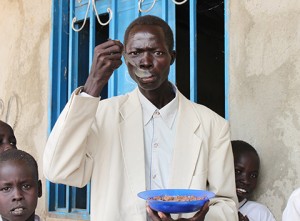 Lunch, Tea, Agriculture
Lunch, Tea, Agriculture
Hunger is one big barrier to learning. In 2017, two agencies of the United Nations declared famine in certain parts of the country. At Raising South Sudan project schools, meals are provided to all students. Lunch and tea breaks are a daily treat and motivator for teachers. And through a collaboration with nonprofit Rise Against Hunger, we’ve been expanding gardens and farms to improve nutrition and create cash crops that help sustain schools.
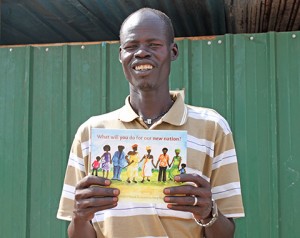 Books, Materials, Training
Books, Materials, Training
South Sudan has an approved national curriculum, but most schools don’t have materials. With donations from US schools participating in our Walk for Wisdom service learning fundraisers, we bought teacher guides and student workbooks for all subjects across all grades. Grants from St. Luke’s Episcopal Church Foundation and the Peeler/Casey Foundation funded an illustrated series of folktales and continuous training on lesson plan development for 30+ teachers and staff.
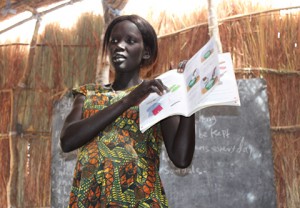 Women, Girls, ECD Innovations
Women, Girls, ECD Innovations
Most women in South Sudan haven’t finished primary school, so teaching staffs are generally male. So, we’re emphasizing education for girls. Thanks to proactive recruiting, girls make up 30+% of students at Raising South Sudan project schools and 50+% in Early Childhood Development classes. We were honored when South Sudan nominated this work for a UNESCO prize for girls’ and women’s literacy.
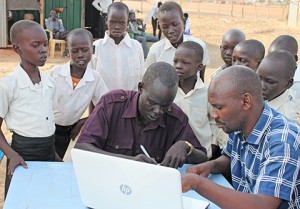 Serious About Testing
Serious About Testing
Eighth graders (last year of primary school in South Sudan) recently completed mock national exams. The Gumriak school ranked #1 in Ruweng State, and Nyarweng ranked #3. But aspirations are even higher. Teachers must develop “schemes of work” and lesson plans, but professional development is rare. So, in September, our education facilitators are reviewing exam results and helping teachers set personal improvement goals for 2017 final exams and next year.
Will you help us continue this progress? Support the Teachers, Embrace Our Kids.
http://tinyurl.com/RSS-SupportTeachers


